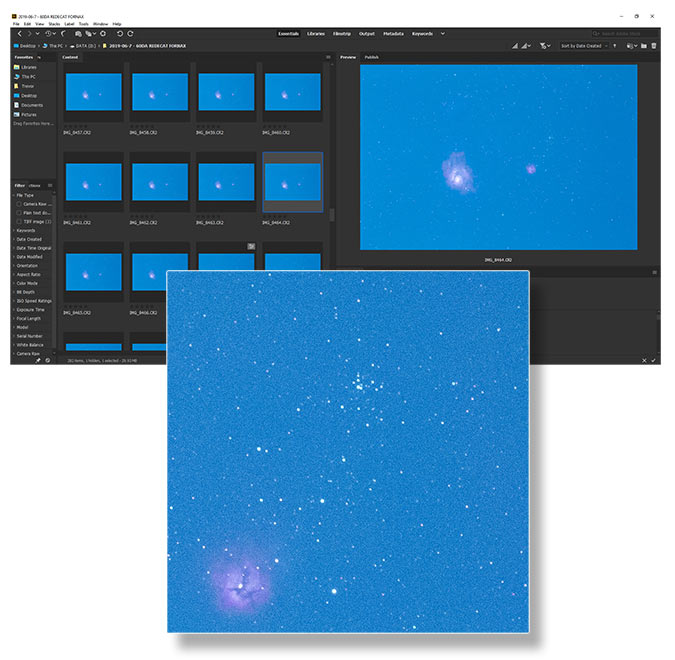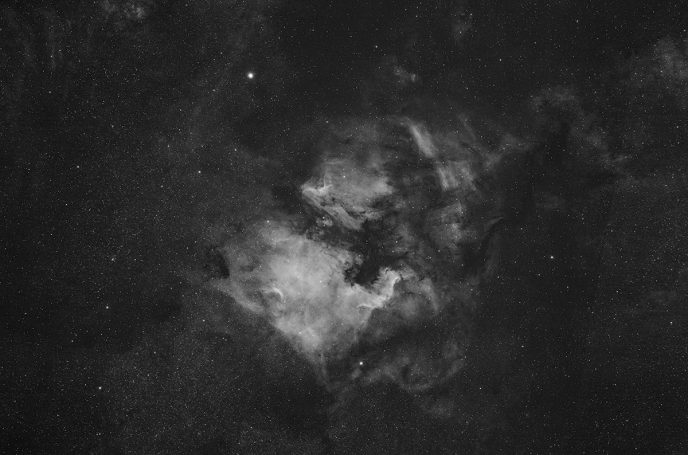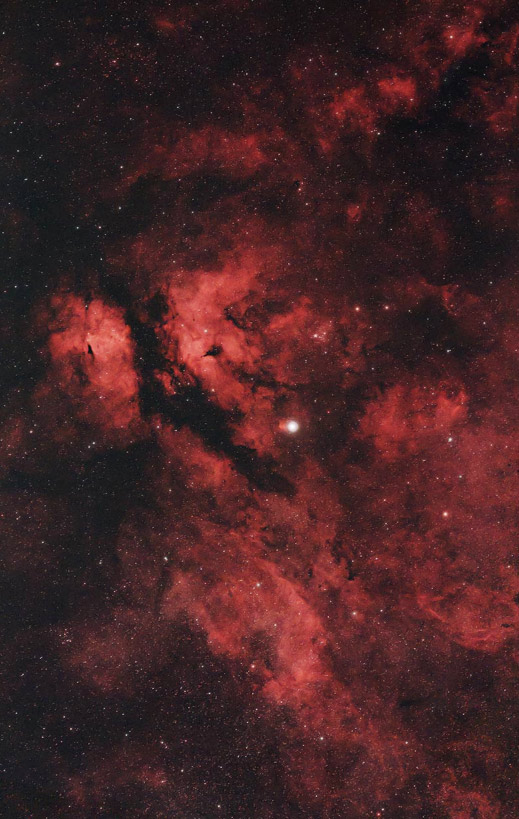Fornax Mounts LighTrack II Review
The Fornax Mounts LighTrack II was designed for accurate tracking of the night sky, for long exposure astrophotography projects. This tracking camera mount looks and acts differently than all of the other star trackers I have previously reviewed, including the wildly popular models from iOptron.
The bundle I received from Fervent Astronomy included the MMW-200 wedge to mount the tracker to my tripod and the counterweight kit. The first thing you’ll notice about the LighTrack II mount is the metal arm that swings through the control unit. The fine friction strip helps the LighTrack II maintain balance, and was designed with strict production tolerances.
Here is an overview of the LighTrack II’s unique design and primary components:
The LighTrack II boasts “amazing unguided tracking accuracy” thanks to its precision motor and friction drive. The manufacturer lists that peak-to-peak unguided tracking error is less than 2 arcseconds in 8 minutes. I can confirm that the unguided performance of the Fornax LighTrack II is incredible and that the 3-minute images I’ve captured at 250mm were razor sharp.
The true test of a portable star tracker’s accuracy is the use of longer focal lengths over a long exposure (usually 2-minutes or more). The increased magnification delivered by a telephoto camera lens or small refractor telescope means that any issues in tracking will show themselves over the course of a single exposure.
The image below served as a great test of the Fornax Mounts LighTrack II’s impressive tracking capabilities. The images were shot using an effective focal length of 400mm, and each exposure was 3-minutes in length.
I captured the Lagoon and Trifid Nebulae on the Fornax LighTrack II (William Optics RedCat 51 refractor).
Capturing the Lagoon Nebula and Trifid Nebula region with the Fornax LighTrack II was one of my first experiences using the mount, and it was a good one. The images were 3-minutes each at an effective focal length of 400mm with my camera system, and the unguided exposures were excellent.
Of course, even the most accurate star tracker will show elongated stars if the polar alignment procedure was not done correctly. In this example, the polar axis of the mount was accurately aligned with the polar axis of the Earth using the polar scope that Fervent Astronomy included with the mount (it is an added accessory).
Here is a look a single 180-second sub exposure using the LighTrack II with my Canon 60Da, William Optics RedCat 51, and the OPT Triad Ultra filter. I’d feel comfortable going to 5-minutes, wouldn’t you?
A single 3-minute, unguided exposure using the Fornax Mounts LighTrack II.
The LighTrack II fits in the star tracker category, but it really feels like a new class that sits between a portable star tracker, and a full-blown German equatorial mount (without motorized declination control).
Bundles and Accessories
You can order the Fornax Mounts LighTrack II in a number of configurations. If you already own a capable tripod, polar scope, and ball head, you’ll just need to actual LighTrack II mount and the FMW-200 wedge. Most people, however, will need to order a more complete package that includes the illuminated polar scope and/or QHY PoleMaster adapter.
For portable star tracker mounts like this, I prefer the manual approach of looking through the polar scope when aligning the mount for astrophotography. Once you get used to the process, it takes less than 30-seconds to align the RA axis of the mount with the north celestial pole.
The LighTrack II and FMW-200 Wedge mounted to a sturdy tripod.
Polar Alignment
The LighTrack II is easy to set up and polar align. The arm holding the polar scope can swing out to a position that is comfortable to the user, and this simple and ingenious design is one of my favorite features of the mount. In fact, I prefer the polar alignment procedure of the LighTrack II over the ones using the iOptron polar scopes.
The “constellation-based” illuminated reticle polar scope that comes with the LighTrack II involves keeping both eyes open, using the bright star Kochab as a reference. The detailed polar alignment procedure may seem a little different at first, but I believe it’s actually faster and easier than my previous manual methods.
Framing up your Target
Once you have decided on the deep sky object or area of sky you would like to photograph, I suggest moving the primary arm and RA motor to it’s starting position. You can do this easily by pressing the silver up/down buttons underneath the status light. (The status light will blink when you are at the edges of the motor distance).
Then, use the ball head attached to your camera to roughly point your lens towards the object you intend to image. The process of lining up your target will likely include a few test exposures (10-15 seconds in most cases), to make sure things are framed up the way you want. You’ll now have roughly 100 minutes to collect photons on your subject, before having to move the RA motor back to the starting position.
Important Tip:
You can easily keep your object centered while returning the RA motor to the home position by loosening the pan lock knob on a 3-way ball head. This way you can your camera in place while you return the RA motor to the home position, and re-lock it into place.
Here’s a good look at the impressive build quality of the FMW-200 wedge base for the mount.
Build Quality
The LighTrack II is by far the prettiest camera tracker I’ve ever used, and one you could proudly display at star parties and astronomy events for years to come. The attention to detail from the high-end UV coatings on the black cover of the mount to the Fornax logo in the wedge base is evident.
This design is as beautiful as it is capable, but the added weight and profile of the LighTrack II also mean that a serious tripod is needed to mount it.
You probably don’t need 2” steel legs the way I’ve got the LighTrack II mounted (An old Celestron CG-5 Tripod), but the collapsible travel tripods that I use with the iOptron mounts won’t do. The mount itself weighs about 3 lbs, and it’s rated to handle 13 pounds of gear attached on top, without the additional counterweight system attached.
LighTrack II Core Specifications
- Maximum Tracking Time: 107 minutes
- Periodic Error: < +/-1 arc, (8 min)
- Longest Useful Focal Length: 500mm
- Longest Useful Exposure Duration: 6-minutes
- Maximum Payload Capacity (without counterweight): 13.2 lbs
- Tracking Speeds: Sidereal, Solar, Lunar, Half
- Auoguider Input: Yes
- Mount Weight: 2.9 lbs.
- Built-in Battery: No
Results using the LighTrack II
The following images were captured using a Canon EOS Rebel T3i DSLR camera with an Astronomik 12nm H-alpha clip-in filter. A Rokinon 135mm F/2.0 lens was attached to the camera to collect a large area of sky at once. I’ll eventually add color to these images, but they serve as an excellent example of the tracking accuracy of the LighTrack II.
The North America Nebula (H-Alpha). Rokinon 135mm F.2 Lens on the LighTrack II.
The Heart and Soul Nebulae (H-Alpha). Rokinon 135mm F.2 Lens on the LighTrack II.
If you’re comparing the Fornax Mounts LighTrack II with the iOptron SkyGudier Pro, the accessories needed to complete a “full” package will send you well past the price of the SkyGuider Pro. The iOptron SkyGuider Pro full package includes the wedge, polar scope, and counterweight package. These items must be added on to the original price of the LighTrack II mount and purchased as a bundle.
With that being said, the Fornax LighTrack II is clearly on a different level than the SkyGuider Pro in terms of build quality and mechanics. The all-metal components are made from aluminum alloy reinforced with magnesium, with a carbon-composite plastic housing for the electronics.
LighTrack II vs. SkyGuider Pro
The Fornax Mounts LighTrack II is an impressive star tracking mount for astrophotography, and I have found myself reaching for it first when shooting new projects from the backyard. However, those looking to invest in a single, all-purpose star tracker for all imaging scenarios need to understand what the true user experience entails.
Related Article: Fornax Mounts LighTrack II vs. iOptron SKyGuider Pro (Cloudy Nights).
In my mind, there is one major negative aspect of the Fornax Mounts LighTrack II, and that’s the need for an external 12V power supply. Yes, all of my equatorial telescope mounts require this connection, but that puts them (and the LighTrack II) in a less-portable category of tracking mounts.
I believe that any mount that wants to compete in the star tracker category should have a built-in power option. Even the option of using 8 AA batteries would be of use to me.
The iOptron SkyGuider Pro, on the other hand, includes an internal, rechargeable, lithium-ion battery that can be charged with a mini-USB charging cable. If you want to travel to a remote location with the LighTrack II, be prepared to power the mount using the cigarette lighter plug from your car.
vs. Sky-Watcher Star Adventurer
Another contender in this category is the uber-popular Sky-Watcher Star Adventurer. This star tracker comes in a few packages, with the “Pro Pack” being the full-featured and most capable option.
Like the SkyGuider, the Star Adventurer offers extreme portability for astrophotography on the go. It uses 4 x AA batteries to operate and includes 7-tracking speeds.
I consider the Star Adventurer to be one of the smartest choices you can make when it comes to building an ultra-portable astrophotography kit.
Fornax Mounts LighTrack II vs. the Sky-Watcher Star Adventurer Pro.
Although the Fornax Mounts LighTrack II is much more expensive (and less portable), it has the advantage of precise tracking at longer focal lengths and better stability.
Many will compare the Star Adventurer against the Fornax Mounts LighTrack II when making a buying decision, but they offer completely different user experiences. The one that is right for you will depend on your budget and image acquisition workflow.
Video
In the following YouTube video, I compare the user experience of the Fornax Mounts LighTrack II against the one using 2 popular iOptron tracking mounts. The star tracker that is right for you depends on your personal desired user experience, and how portable you need the star tracker to be.
I very much enjoy using the LighTrack II in the backyard connected to household electricity. The mount is quick to set up and polar align, and I can easily find and shoot my target. However, when traveling, I much prefer to use a star tracker with an internal battery for complete freedom.
Final Thoughts
The Fornax Mounts LighTrack II is an impressive star tracker to behold first-hand. It is highly capable and lives up to the lofty tracking accuracy specifications.
The 107 minutes of total tracking time isn’t a deal-breaker, but it’s certainly something you’ll have to get used to. Having to schedule another visit to the mount (whether it’s in the backyard, or in a remote dark sky location) as the mount approaches 2 hours of tracking can be a bit of pain if you are used to letting a mount run for 4-5 hours at a time.
Thankfully, the process of swinging the tracking arm back to its starting position is a simple process, and you can start shooting another 1.5 hours where you left off.
The suggested focal length of 500mm or less is impressive. I’ve shot at an equivalent focal length of 400mm (250mm telescope x 1.6 crop factor) and I see no indication of the tracking failing using a longer reach or a heavier payload.
The Sadr Region of Cygnus. William Optics RedCat 51 on the Fornax Mounts LighTrack II.
The bottom line is, if complete portability is a must for you, the need to connect to a 12V power supply may dissuade you from the LighTrack II.
If you are willing to put up with the fact that you’ll need to return the arm to the home position after an hour or so, and powering the device is a non-issue, the Fornax Mounts LighTrack II will reward you will impressive images.
I found myself reaching for the LighTrack II more often than I expected when squeezing in a quick astrophotography session in the backyard. However, in terms of overall value, I feel that the iOptron SkyGuider Pro is a better choice for most users.








